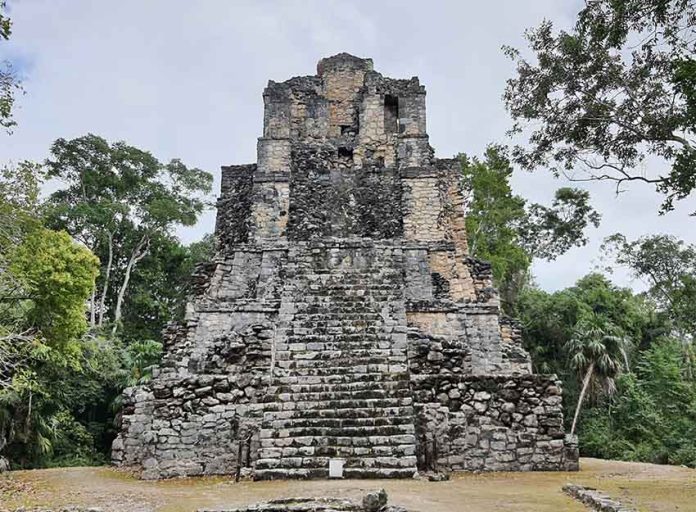Budget, Backpackers, Surfers, Beach Lovers, Naturalist, Hippie, Sun and Sand worshipers, Off the Beaten Path Paradise! Everyone is welcome at Zipolite!
Translate
A little about Playa Zipolite, The Beach of the Dead . . .
Playa Zipolite, Oaxaca, Southern Mexico, on the Pacific Ocean. A little bit about my favorite little get-away on this small world of ours.Zipolite, a sweaty 30-minute walk west from Puerto Angel, brings you to Playa Zipolite and another world. The feeling here is 1970's - Led Zep, Marley, and scruffy gringos.A long, long time ago, Zipolite beach was usually visited by the Zapotecans...who made it a magical place. They came to visit Zipolite to meditate, or just to rest.Recently, this beach has begun to receive day-trippers from Puerto Angel and Puerto Escondido, giving it a more TOURISTY feel than before.Most people come here for the novelty of the nude beach, yoga, turtles, seafood, surf, meditation, vegetarians, discos, party, to get burnt by the sun, or to see how long they can stretch their skinny budget.I post WWW Oaxaca, Mexico, Zipolite and areas nearby information. Also general budget, backpacker, surfer, off the beaten path, Mexico and beyond, information.REMEMBER: Everyone is welcome at Zipolite.ivan
Zipolite Blog Links
- Playa Zipolite
- Zipolite Entertainment, Party, Sports, Dance, Clubs, Music - - - Zipolite Entretenimiento, Fiesta, Deportes, Baile, Discotecas, Música
- Zipolite Food, Drink, Sunrise, Sunset - - - Zipolite Comida, Bebida, Amanecer, Atardecer
- Zipolite Nudist - - - Zipolite Nudista
- Zipolite ... Rentals, Camping, Hammocks, Apartments, House - - - Zipolite ... Alquileres, Camping, Hamacas, Apartamentos, Casa
- Zipolite Tours - - - Tours en Zipolite
- Zipolite Transportation and Rentals, Taxis, Bike, Moped, ATV - - - Zipolite Transporte y Renta, Taxis, Bicicleta, Ciclomotor, Cuatrimotos,
- Zipolite Yoga, Relax, Meditation, Temazcal - - - Zipolite Yoga, Relax, Meditación, Temazcal
- Budget Backpackers Off The Beaten Path - - - Mochileros económicos fuera del camino trillado
- Just For Fun ... by iVAn - - - Solo por diversión... de iVAn
- Near Zipolite - - - Cerca de Zipolite
- Travel Mexico - - - Viajes México
- ALL Playa Zipolite Blogspot Dot Com - - - TODO Playa Zipolite Blogspot Dot Com
Saturday, March 18, 2023
Strung along by Oaxaca cheese The fresh, clean taste; gooey meltiness; and stringy fun of this cheese found throughout Mexico make it a winner in all sorts of dishes.
 |
|
|---|
Strung along by Oaxaca cheese
The longer you live in Mexico, the more things become a part of your life that you’d never heard of before, or that previously had been relegated to the category of “exotic specialties.”
Such is the case for me with Oaxaca cheese. Now I almost always have a ball of it in the fridge, for healthy, high-protein snacking, for cooking, for adding to sandwiches and salads. It’s kind of a mainstay.
Here in Mazatlán, the weekly mercado orgánico has a vendor that makes and sells balls of fresh Oaxaca cheese (plain or with chipotle or garlic). It’s lovely: soft and firm at the same time, with a delicate, almost milky flavor.
But you can find Oaxaca cheese worth buying in grocery stores too — you just have to read the labels and do your own taste tests till you find one that suits your fancy. Avoid any with too many ingredients; that list should be short and leche de vaca (cow’s milk) should be the first one.
Sometimes I’ve found that it can be too salty. Here’s a tip: Pull or cut the ball apart into smaller pieces and let sit, refrigerated, in a bowl of water overnight. The excess salt will leach into the water, and your cheese will be more fresh-tasting.
Queso Oaxaca (waa-haa-kah ) is a simple, unaged cheese, made by double-cooking and curdling milk and then stretching the cheese curds, resulting in the trademark stringiness.
Should you want to make it at home, it’s not difficult, albeit a little time-consuming and exacting. In the state of Oaxaca, where it originated, it’s called quesillo (kay-see-yo), meaning “rope cheese.”
It’s the same process used to make mozzarella, and, yes, it’s what commercial “string cheese” kind of is. I say “kind of” because there are so many added stabilizers, etc. that it bears little resemblance to its purer Mexican cousin.
What to use it for? Anything where you want melty, gooey cheese. It’s a good substitute for mozzarella or Monterey Jack, and, of course, can be eaten for fun just like string cheese (except it tastes better!) Enchiladas, quesadillas, chiles rellenos, grilled cheese sandwiches, lasagna, pizza and other Italian dishes, nachos, migas, molletes — the list goes on and on.
Because Oaxaca cheese is a fresh cheese, you need to eat it quickly. Store in the refrigerator in a covered container of water. It should last seven to 10 days. If need be, you can also freeze it. Just put the unopened package in the freezer and thaw in refrigerator before using.
Choriqueso (“Hangover Helper”)
- ½ lb. ground pork shoulder
- 2 tsp. red wine vinegar
- ¼ tsp. cinnamon
- 1 tsp. paprika
- ½ tsp. dried oregano
- 1/8 tsp. ground cumin
- 1/8 tsp. cayenne
- 1 tsp. grated garlic
- 1 tsp. salt
- 1 Tbsp. vegetable oil
- 1½-2 cups grated Oaxaca cheese (or pulled into strings)
- Tortilla chips for serving
Preheat broiler to high. Using your hands, mix pork, vinegar, cinnamon, paprika, oregano, cumin, cayenne, garlic, and salt in medium bowl. Heat oil in 10-inch broiler-safe skillet over medium-high heat; add chorizo mixture and cook, stirring and breaking up the meat until no longer pink. Season to taste with salt. Remove from heat. Top with cheese.
Place under broiler until melted. Serve immediately with tortilla chips for scooping.
Carnitas Torta
- 1 loaf rustic country bread or ciabatta
- 1½ cups refried beans
- About 1½ kilos pork carnitas
- 1/3 cup salsa verde
- 12 oz. Oaxaca cheese, shredded or pulled into strings
- 1½ cups pickled red onions, drained well
- 2-3 jalapeño peppers, finely sliced
Use a bread knife to make a hollow “bread boat” by slicing off the top 1-1½ inches of the loaf. Then cut around perimeter of the interior of the bigger bottom piece without breaking through the bottom crust and use your fingers to pull out the excess bread from the inside.
Spread beans on bottom of the bread boat, followed by carnitas, salsa, cheese, onions and jalapeños. Close sandwich.
Wrap sandwich tightly in aluminum foil. Place between two stiff cutting boards, and then place a heavy weight on top (about 40 pounds). Press down firmly to flatten sandwich evenly; let rest under the weight for at least 4 hours.
When ready to eat, adjust oven rack to center position and preheat oven to 375 F (177 C). Remove weights; slice sandwich through foil into four to six pieces with a bread knife. Unwrap and transfer to baking sheet, pressing the pieces back together to form a full sandwich shape. Bake in oven until hot and cheese has melted, about 15 minutes. Serve immediately.
Smoky Mushroom Quesadillas
- 2 Tbsp. olive oil
- 8 oz. portobello mushrooms, sliced
- 1 tsp. minced garlic
- 2 green onions, chopped
- ½ tsp. coarse salt
- ½ tsp. smoked paprika
- ¼ tsp. black pepper
- About 2 cups (8 oz.) shredded Oaxaca cheese
- ½ cup arugula
- ½ cup chopped cilantro
- 10 (6-inch) corn or flour tortillas
- Salsa for serving
Heat oil in a large skillet over medium-high heat; add mushrooms. Cook 5 minutes, stirring. Add garlic and green onions; cook 3 minutes. Season with salt, pepper and paprika. Set aside. In a separate bowl, toss arugula and cilantro.
Wipe out skillet or use a comal; warm over medium heat. Heat a tortilla, flip and layer cheese, mushroom mixture, greens and cheese again on half of one side. Fold tortilla over so melting cheese seals it shut. When tortilla is golden brown on the bottom, flip and cook the other side for another 30 seconds. Repeat with remaining tortillas and ingredients.
Serve with salsa.
Cheesy Tomato-Bean Bake
- ¼ cup olive oil
- 3 garlic cloves, thinly sliced
- 3 Tbsp. tomato paste
- 3 cups cooked beans or 2 (15-ounce) cans beans (any kind)
- ½ cup boiling water
- Salt and pepper
- About 1⅓ cups Oaxaca cheese, grated or pulled into strings
Heat oven to 475 F (245 C). In 10-inch ovenproof skillet, heat oil over medium-high. Quickly fry garlic until lightly golden, then stir in tomato paste (being careful of splattering). Stir and fry 30 seconds, reducing heat as needed to prevent garlic from burning. Stir in beans, water and generous pinches of salt and pepper. Sprinkle cheese evenly over top. Bake until cheese has melted and browned in spots, 5–10 minutes. Serve with crusty bread for dipping.
Janet Blaser is the author of the best-selling book, Why We Left: An Anthology of American Women Expats, featured on CNBC and MarketWatch. She has lived in Mexico since 2006. You can find her on Facebook.
Massive Algae 'Blob' Creeping Toward Florida Can Be Seen From Space
 | ||
| ||
|
Ancient Maya city of Muyil an overlooked jewel near Tulum
Ancient Maya city of Muyil an overlooked jewel near Tulum
For a unique outing around Tulum, visit Muyil, featuring artifacts over two millennia old and breathtaking views inside a biosphere reserve.
Looking for a unique outing around Tulum? Visit the Muyil ruins, where you can also float along a nearby ancient canal with breathtaking surroundings.
Located around 25 kilometers from Tulum, Muyil is an ancient Maya city located in the Sian Ka’an biosphere reserve — a UNESCO heritage site. It has fewer visitors than the more famous archaeological sites in the Yucatán peninsula. We visited the site from Valladolid, less than two hours away.
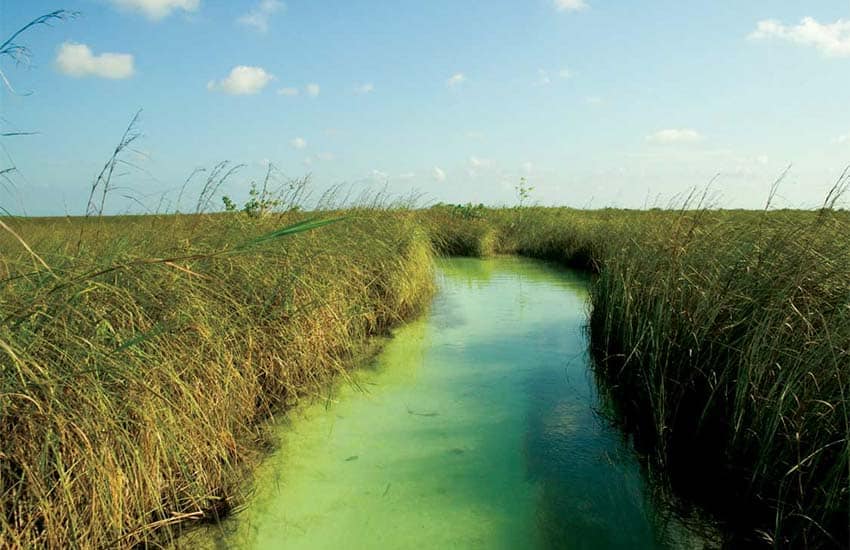
The city’s original name is not known. It has been called Muyil and Chunyaxché since the colonial era, which are the names of two lagoons in the area. Muyil means “place of the rabbit,” and Chunyaxché means “ceiba log” in Mayan. Ceiba, also popularly known as the “tree of life,” was a sacred tree in ancient Maya culture. The biosphere reserve’s name, Sian Ka’an, means “entrance to the sky.”
Muyil is considered the most important among over 20 settlements within the biosphere reserve. Its history dates back over two millennia. According to the National Institute of Anthropology and History (INAH), the settlement was a small village around 300 B.C. and became an important city by about A.D. 250.
The city was involved in trade and also had connections with Maya cities like Cobá, Chichén Itzá, and Mayapán. Although Muyil was occupied when the Spanish arrived, its population declined quickly in the early 16th century. INAH found no evidence of the site’s occupation from the beginning of the Spanish conquest to the mid-19th century, when Maya rebels occupied the area from 1847 to the early 20th century during Yucatán’s Caste War.
The site has two sections, Muyil A and Muyil B, although only the former is open to visitors. There are fewer excavated buildings here than at many famous sites, so you can see them in a couple of hours. During our visit, most structures were cordoned off to visitors.
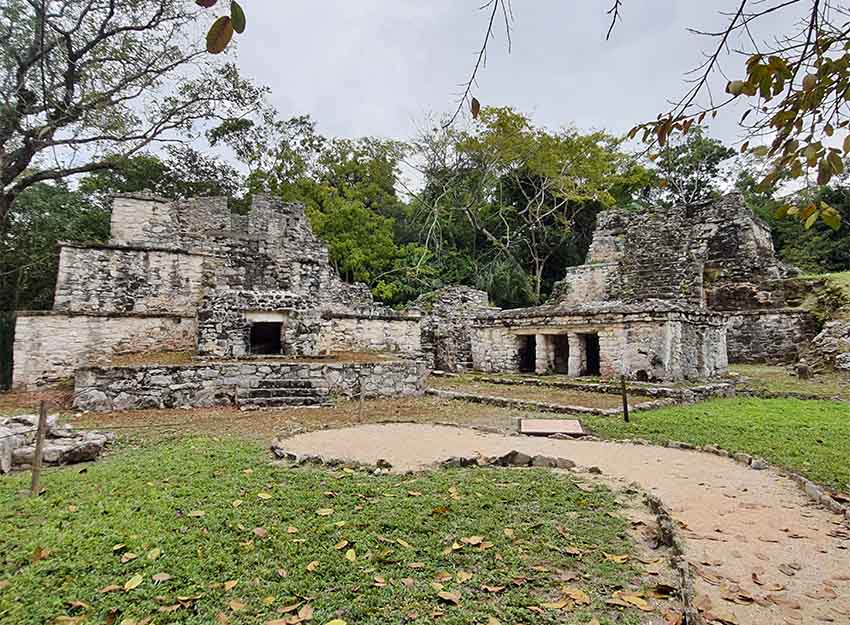
Once you enter the site, you’ll walk into the Entrance Plaza (a.k.a the Entrance Group), with a group of buildings, including several pyramidal structures with temples on them. This plaza shows some of the site’s oldest civic and religious architecture. Civic events and cult-based ceremonies are thought to have taken place here.
An interesting building in this section is a temple with traces of mural paintings. The plaza also has platforms that once had residences built with perishable materials.
Next, you can walk up to the site’s most important structure, the Castle, measuring around 17 meters tall with a beautiful crowning temple. Make time to check out the features of this impressive building from different sides. Two offerings with a large number of ornamental items, including those with jade and shells, were found on an altar here.
Archaeologists have also identified two building phases within this structure, as well as elements representing the architectural style of Petén, a region in Guatemala. It will remind you of the structures in Tikal (Guatemala), if you have visited them.
The circular tower-like structure on top is a unique architectural element. The flat stones on its exterior are believed to represent the protruding thorns of a ceiba tree.
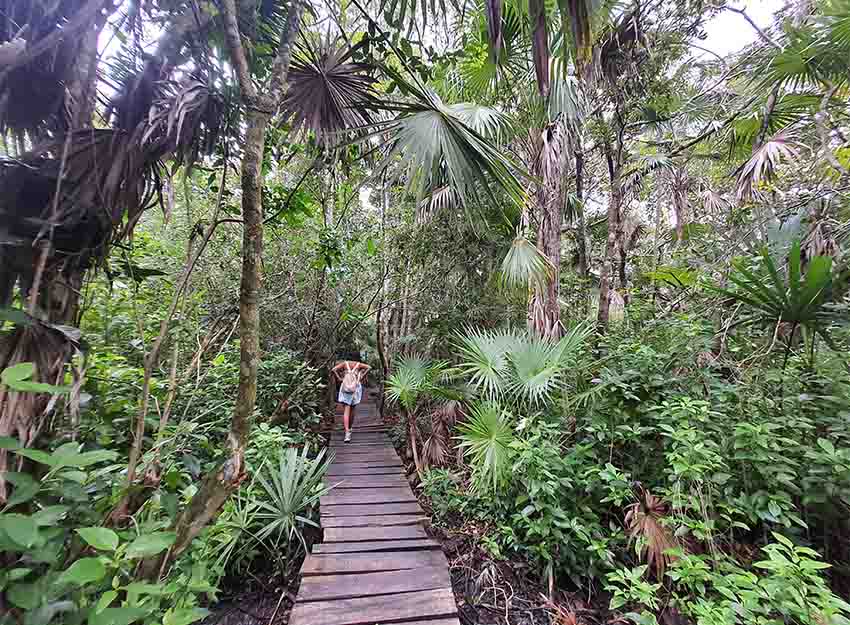
Another notable building is the Pink Palace (or Temple 8). It is part of a complex of buildings, including temples, altars, and an oratory, separated by a low wall.
Archaeologists have identified two building phases here. It has remains of stucco and traces of paint. The Pink Palace is considered the center of the site’s community life.
After seeing the buildings, take the path through some beautiful jungle to a wooden watchtower. Along the way, there are signs highlighting interesting spots. The watchtower offers magnificent views across the greenery and lagoons. On a sunny day, you can see the beautiful blue shades of the water.
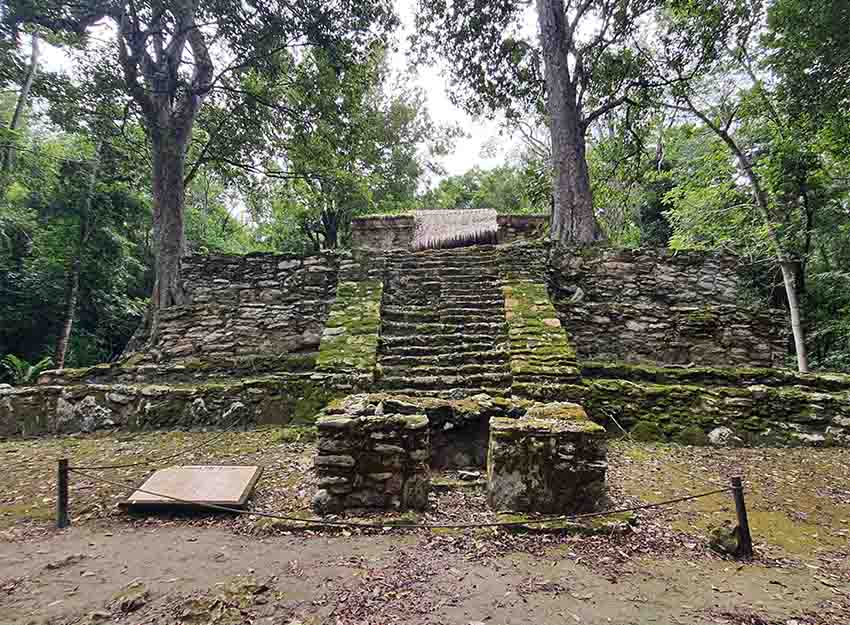
The climb is steep, so take good care. It may not suit all visitors.
If you’re up for some light adventure, you can take a boat from the nearby lagoon to enjoy the river float, in which you float along an ancient canal for around 30–45 minutes. The boat will take you to a spot near another ancient structure by the canals called Xlapak. You can check this out before getting into the clear and refreshing water.
The canals flow through mangroves and breathtaking scenery. The best part is that the current gently pushes you along, so you can relax amid the tranquil surroundings. Your boat captain will show you how to wear a life jacket in a unique way to get a somewhat seated position in the water.
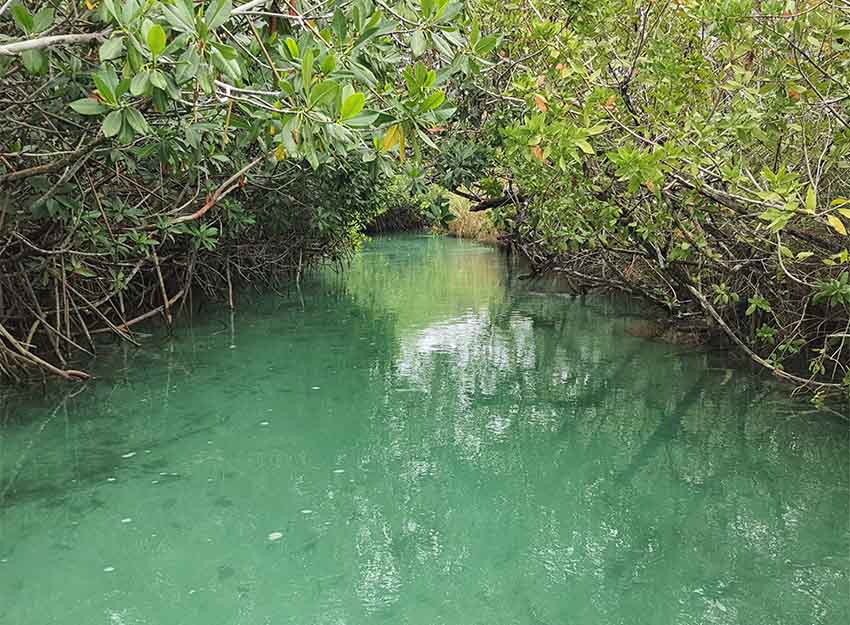
We did the river float first and visited the ruins after since fewer visitors wait for boats early in the morning. You can also book a tour in advance.
If you have extra time after your trip to Muyil, visit the Tulum ruins, less than 45 minutes away.
Thilini Wijesinhe, a financial professional turned writer and entrepreneur, moved to Mexico in 2019 from Australia. She writes from Mérida, Yucatán. Her website can be found at https://momentsing.com/






